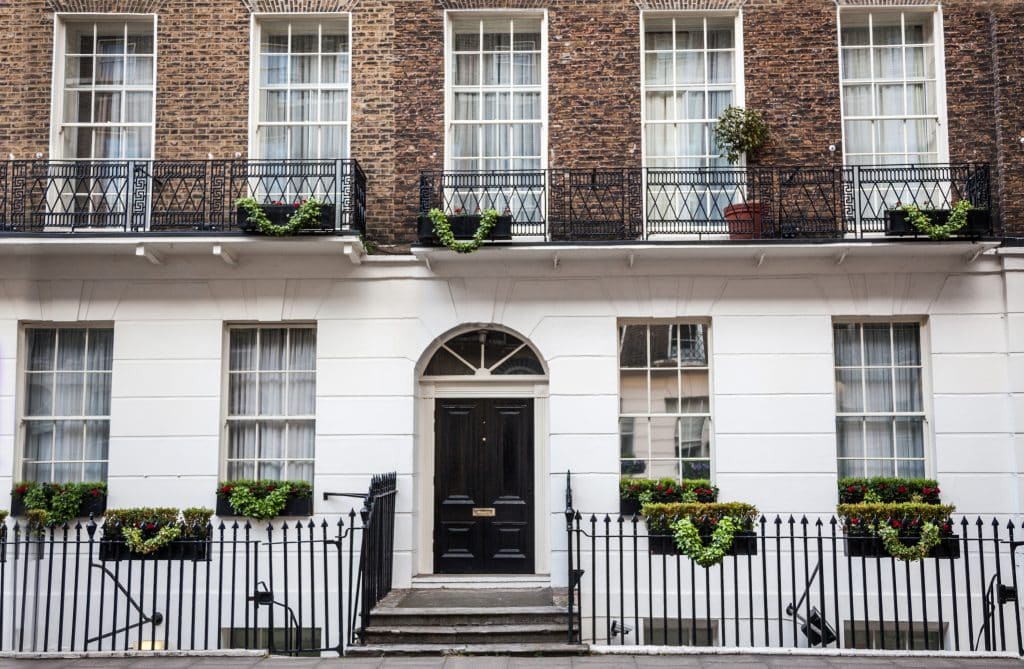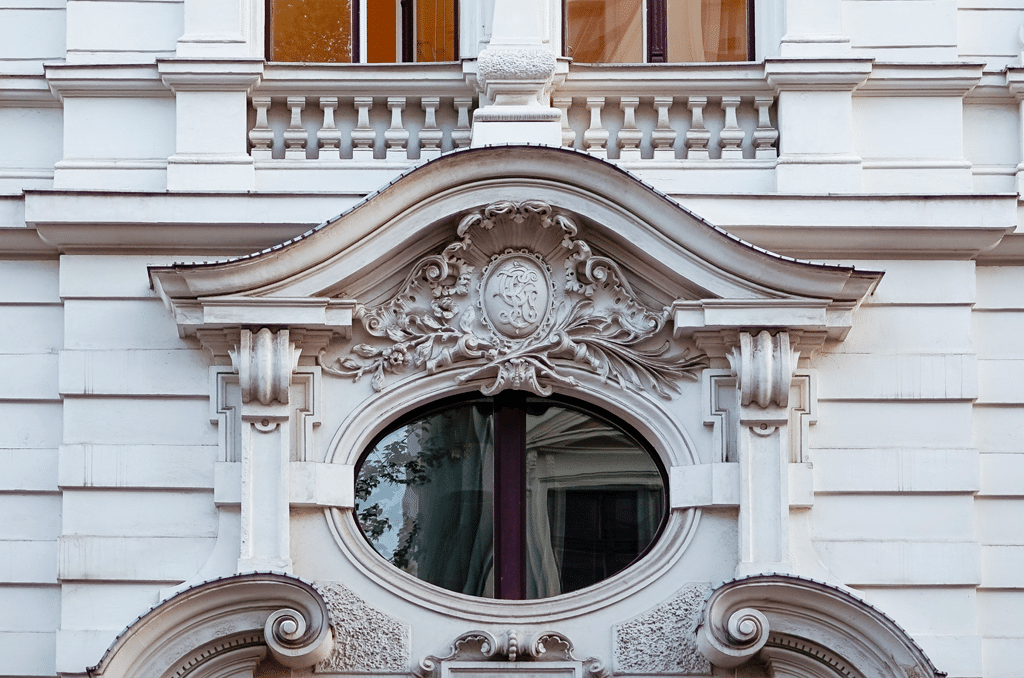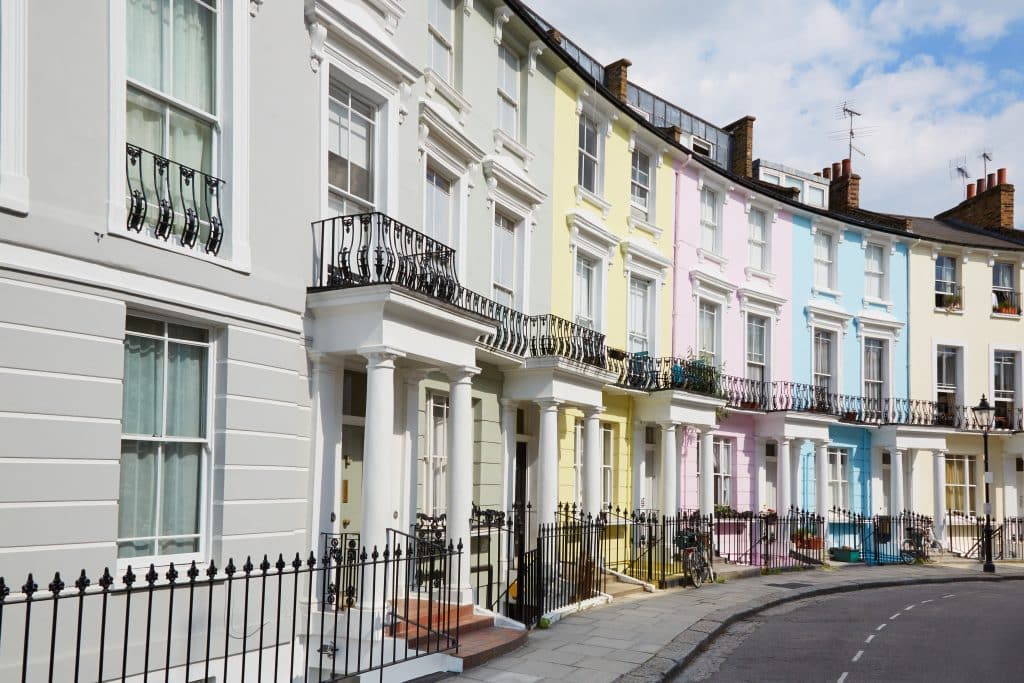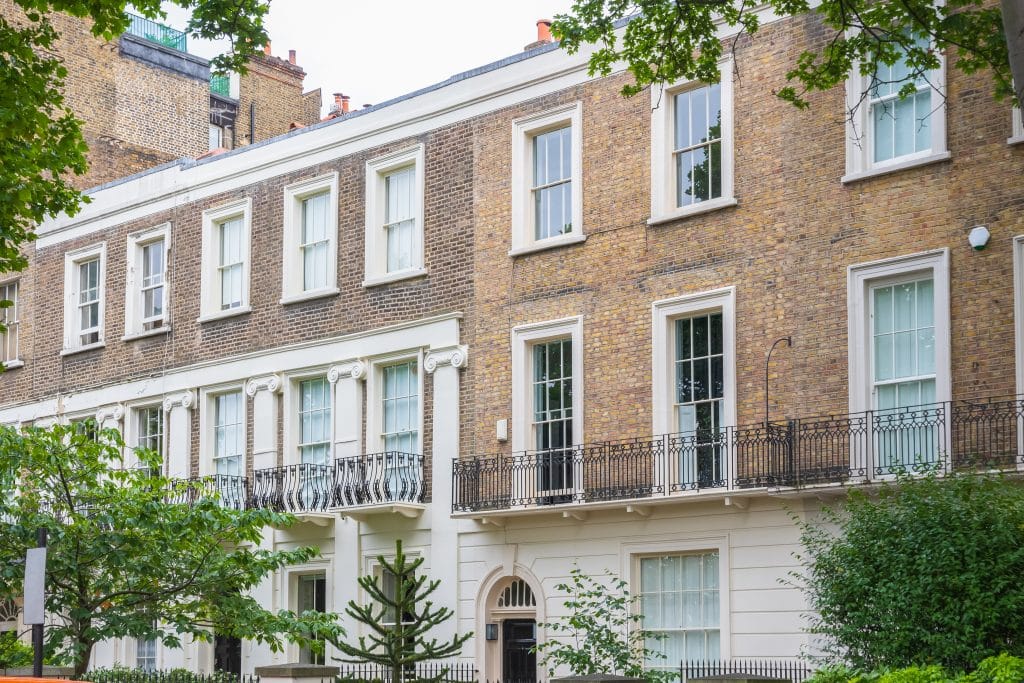Caring for London’s unique heritage features
Original features – we love them. In fact, you could say that, here at Ventrolla, we’re obsessed with the beautiful design details of period properties. Protecting them is of the utmost importance – and the maintenance and preservation of heritage characteristics is at the heart of everything we do.
Period features define a property’s era. From parquet floors in Edwardian houses to Victorian sash windows with horns. You can find these special touches right across the UK – but London has more than its fair share of distinctive architecture with period characteristics that you won’t find anywhere else.

Stucco façade
Throughout the Primrose Hill and Kentish Town Conservation Areas there are a wealth of grand terraced houses with stucco façades. While many are painted in white and cream shades, to contrast against London brick, these locations are also particularly famous for their ‘Rainbow Roads’ – streets with properties painted in an array of colours. Falkland Road in Kentish Town is one great example. Inspired by adventurous homeowner, Judith Peak, who painted her façade turquoise – neighbours soon followed suit as they tried to keep up with the craze. This became so popular, that the road was designated a conservation area in 2012.
While stucco is a durable material, often lasting 50 to 80 years, it requires regular maintenance to prevent water from getting in through cracks and damage. It’s wise to call in an specialist restoration company if there are large areas that need attention, to maintain the look of the stucco and also to protect the structural integrity of the building.

Cast ironwork
Chalcot Crescent in Primrose Hill is one of the most famous ‘colourful’ streets, but rather than vibrant shades, these houses are painted in a soft pastel palette. A key distinguishing feature of this imposing stretch of properties, built around 1855, is the cast iron detail. Black painted railings with fleur-de-lys finials and cast iron curved balconies to match contrast against the painted facades. These railings were removed during World War II in many places, but later replaced to bring the original character back.
Periodic maintenance of cast ironwork is key to its longevity. Make sure you plan in regular cleaning, removing vegetation and caring for rust spots to re-finishing with a rust-inhibiting primer and exterior grade enamel.

Timber sash windows
Fitzroy Road is also one of the many place where you can see very fine examples of original wooden sash windows. Probably the most important heritage feature in any period property, windows say more about the era that the home originated from than almost anything else. With pairs of Georgian-style ‘six over six’ sash windows on each floor, here the look is elegant and striking. The windows are framed by moulded stucco surrounds and projecting sills and hoods for added grandeur – and on some properties, the doors have projecting hoods and features supported by columns, too.
Regular maintenance of timber sash windows is of vital importance to extends their life and keep your home looking its best. From re-painting the woodwork to prevent rot to caring for the pulleys and sash cords, many of these tasks can be done yourself – but a specialist can help with bigger jobs, like splicing in new timber to replace rot and fixing issues with stuck windows or broken glazing.

Custodians of heritage detail
At Ventrolla, we are both experts in sash windows and custodians of heritage details – and have been lucky enough to work on some of London’s most iconic streets. Sympathetic restoration is the most important service we offer, but we’re also specialists in discreet modern upgrades – integrating draught-proofing, slim double glazing or secondary glazing. Where a window is beyond repair, our crafted timber windows can be made to replicate the original, keeping the authenticity of your property intact. It’s worth noting, that for properties in conservation areas or for Listed Buildings, our work is carried out in line with the relevant controls and restrictions.
